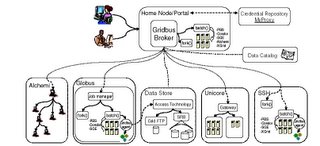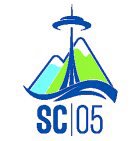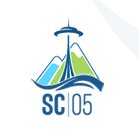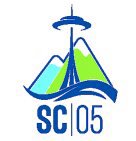REDWOOD SHORES, Calif., Nov. 7 /PRNewswire-FirstCall/ --
Oracle (NASDAQ:ORCL) today unveiled the results of the latest Oracle(R) Grid Index research, which is dedicated to mapping the world's journey to Grid Computing. At a global level,
the Oracle Grid Index has risen to 5.2 from its previous value, in April 2005, of 4.4.
All of the underlying indices making up the overall Grid Index -- Foundation Readiness, Knowledge & Interest and Adoption Lifecycle -- show increases in all geographies, indicating steady progress of mainstream activity towards the implementation of modern dynamic Information Technology (IT) infrastructures.(Logo: http://www.newscom.com/cgi-bin/prnh/20020718/ORCLLOGO )
As well as chronicling the Grid Computing journey, the research(1) illuminates strong links between business management and IT strategy. A key finding is that board-level involvement in IT strategy goes hand-in-hand with business success -- 72 percent of organizations in which business executives are routinely involved in IT strategy are growing, compared to just half that number in which executives are never involved. Furthermore, there is strong evidence that executive involvement in IT strategy and planning leads to better alignment of objectives, priorities and activities which in turn leads to a higher proportion of IT budgets being spent on the creation of business value rather than simply housekeeping.
Global Trends in Grid Computing
Examining the changes in Grid Index values from the previous instance (April 2005) reveal several notable facts:
-- USA makes most progress. With a jump in Oracle Grid Index from 4.6 to
6.1, the USA shows the biggest rise in Index values, which brings it to
join the Nordic countries as featuring the highest Index number. North
America also shows the greatest jump in Lifecycle Adoption sub-indices,
which indicates that actual adoption of Grid Computing is progressing
faster there.
-- Top Three remain unchanged. The Nordics, South-East Asia and the USA
continue to lead the rest of the world on the Grid journey, with Oracle
Grid Indices of 6.1, 5.9 and 6.1 respectively.
-- Southern Europe and traditional Asian markets move slowest. While
India has made a big jump, from 2.9 to 4.4, the other countries which
showed lowest Grid Index figures in April 2005 have moved most slowly
-- Greater China from 4.7 to 4.9, Italy from 4.0 to 4.2, Korea from 4.4
to 4.7 and Spain from 4.2 to 4.5. Japan, included in this survey for
the first time, makes its entrance at an Oracle Grid Index of 4.4.
-- Early Adopters Go For Enterprise Grid Solutions. Informed IT
professionals see Grid as being most relevant as part of their
corporate IT infrastructure. Among the respondents, an "experienced
guru" group(2) highlights cluster grids as being relevant to their
organization in 44% of cases, and a possible option in a further 52%.
Strength of feeling is even higher for distributed enterprise grids,
where the equivalent numbers are 69% and 29%. Far fewer see the firm
relevance of managed hosted grids (22%), utility grid services (25%)
and partner/community grids (7%).
"All indicators in all regions show positive progress in the awareness, understanding and adoption of Grid Computing," said Robert Shimp, Oracle's vice president of Technology Marketing. "The research proves that increasing numbers of organizations around the globe are taking notice of this market- changing technology. It also underlines that more and more of them are taking action to derive benefit from it in the form of better usage of current IT assets and better positioning for the future."
The Business Value of IT
The research also examines the attitudes of organizations' business management towards IT. As well as a clear correlation between business growth and regular business management involvement in IT strategy, the research reveals that IT is increasingly being considered as a core part of business investment:
-- Only 30 Percent of Organizations Can Rely on Business Executive Input
Into IT Strategy. Senior business managers tend to get involved with IT
on an event driven basis, typically in reaction to something that has
occurred in the business world that needs IT support, or when an IT
related event such as the systems failure has a negative impact on the
business. In the majority of organizations, IT appears to be thought of
more as a service function than as an integral part of business
operations.
-- High Business Involvement in IT Strategy is Linked to Better Use of IT
Investment. Traditional wisdom has it that the vast majority of IT
departments' workloads involve housekeeping and maintenance projects.
However, in over 60 percent of those organizations where business
management is always involved with IT strategy, over half of the IT
expenditure relates to business projects. The other end of the
spectrum does reflect the traditional wisdom, though; where there is no
business involvement in IT strategy, nearly 90 percent of
organizations use less than half of their IT spend on business
projects.
-- Business Executives Who Are Fully Involved in IT Strategy Appreciate
the Need for Sound Infrastructure. In the 31 percent of organizations
where IT departments can rely on input from business executives into IT
strategy, over three quarters of the executives concerned fully
appreciate the need for a sound IT infrastructure. At the other
extreme, less than 15 percent of those business executives that have
no involvement in IT strategy have a clear understanding of the role IT
infrastructure plays.
"The Oracle Grid Index research has some important messages for business people everywhere," Shimp continued. "The strong link that it shows between businesses which are growing and those whose executive management are always involved in IT strategy suggests that the board should regard IT as a strategic investment, not merely as a cost center. "
Strong Growth Continues in Key Underlying Technologies, Led by Asia Pacific
Comparison with previous Oracle Grid Index research shows continued strong growth in significant underlying technologies such as Service Oriented Architectures (SOA) and Blade Servers. Asia Pacific, whilst still lagging the other two regions surveyed in actual adoption numbers, has shown higher growth in both areas:
-- Service Oriented Architectures. The number of organizations currently
using or considering the adoption of SOA have risen 18.4 percent in
North America, 17 percent in Europe and 43.6 percent in Asia
Pacific(3).
-- Blade Servers. Organizations currently using or considering adoption
of Blade Servers rose dramatically. The number of such North American
organizations grew 91 percent in North America, 68.7 percent in Europe
and no less than 207.9% in Asia Pacific(4).
About Oracle
Oracle is the world's largest enterprise software company. For more information about Oracle, visit our Web site at http://www.oracle.com/.
Trademarks
Oracle, J.D. Edwards, and PeopleSoft are registered trademarks of Oracle Corporation and/or its affiliates. Other names may be trademarks of their respective owners.
The above is intended to outline our general product direction. It is intended for information purposes only, and may not be incorporated into any contract. It is not a commitment to deliver any material, code, or functionality, and should not be relied upon in making purchasing decision. The development, release, and timing of any features or functionality described for Oracle's products remains at the sole discretion of Oracle.
(1) See "Notes To Editors" for details of the research
(2) 105 respondents out of the total of 1,466 declared the highest level
of grid computing knowledge (five on scale of one to five) along with
current experience of grid technology.
(3) SOA -- Proportion of North American organisations using or considering
SOA rose from 55.4 percent to 65.6 percent; European from 49.5 percent
to 57.9 percent; and Asia Pacific from 26.6 percent to 38.2 percent.
(4) Blades -- Proportion of North American organisations using or
considering Blade Servers rose from 34.7 percent to 66.6 percent;
European from 33.2 percent to 56 percent; and Asia Pacific from 14
percent to 43.1 percent.
Notes to Editors
Quocirca conducted 1466 interviews with senior IT influencers and decision makers, completed in September 2005. 302 of these were conducted in North America, 603 in Europe and the remainder (561) in Asia Pacific. Respondents were from a mixture of large multinationals and medium to large national organizations across a broad cross section of industry sectors.












